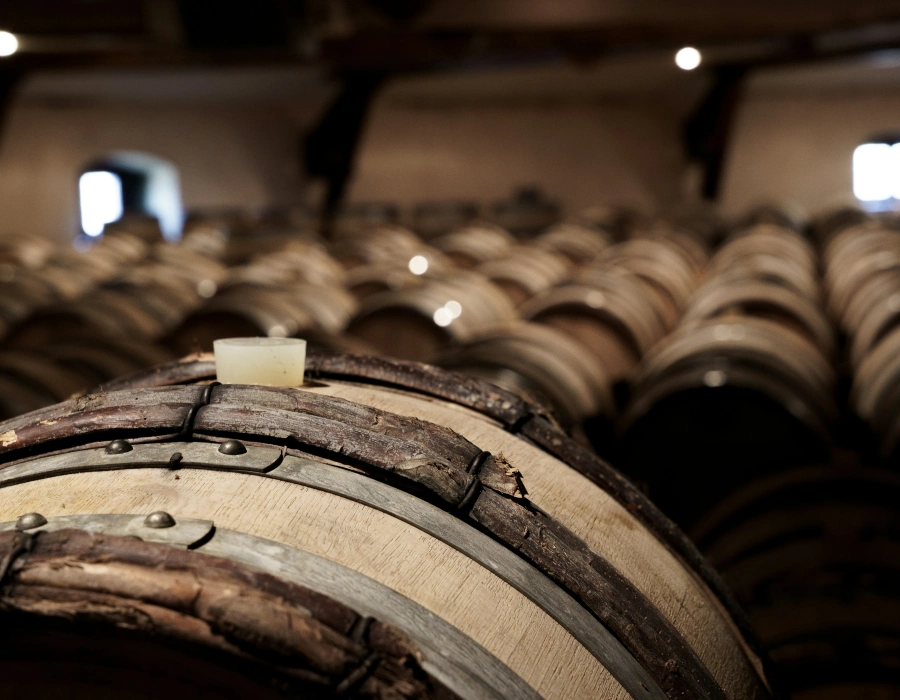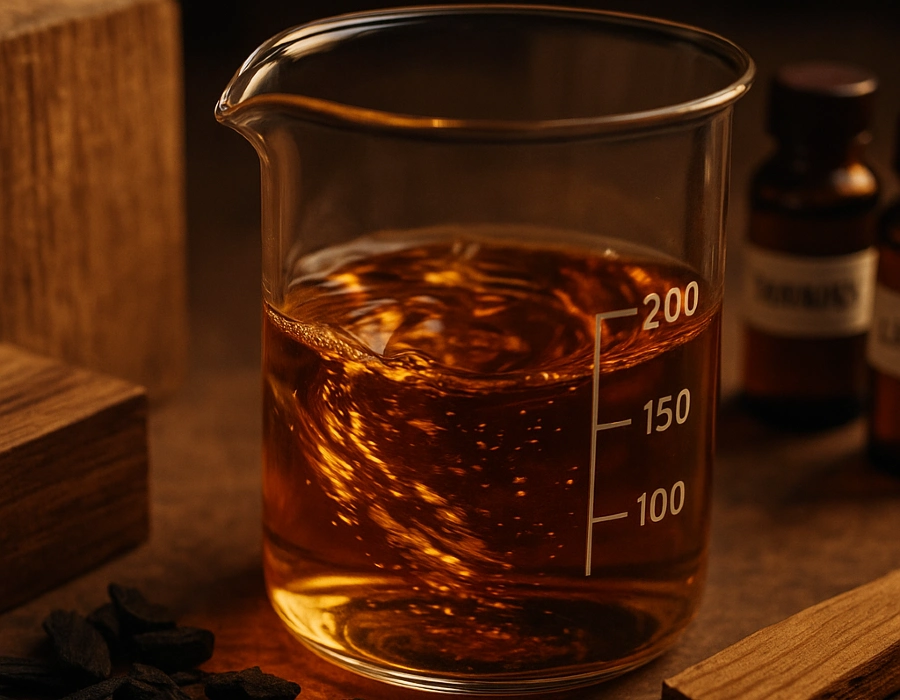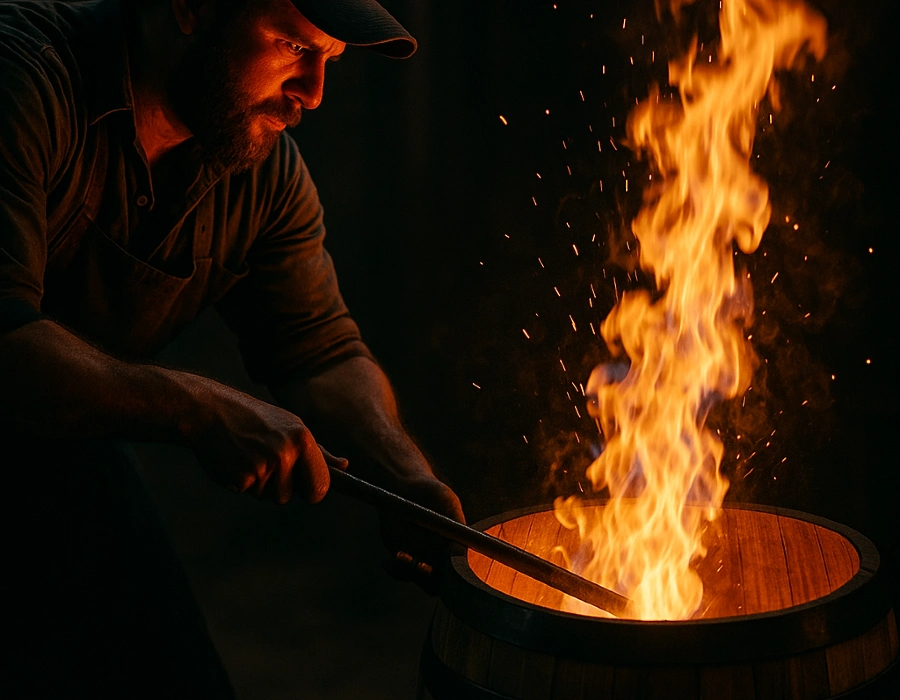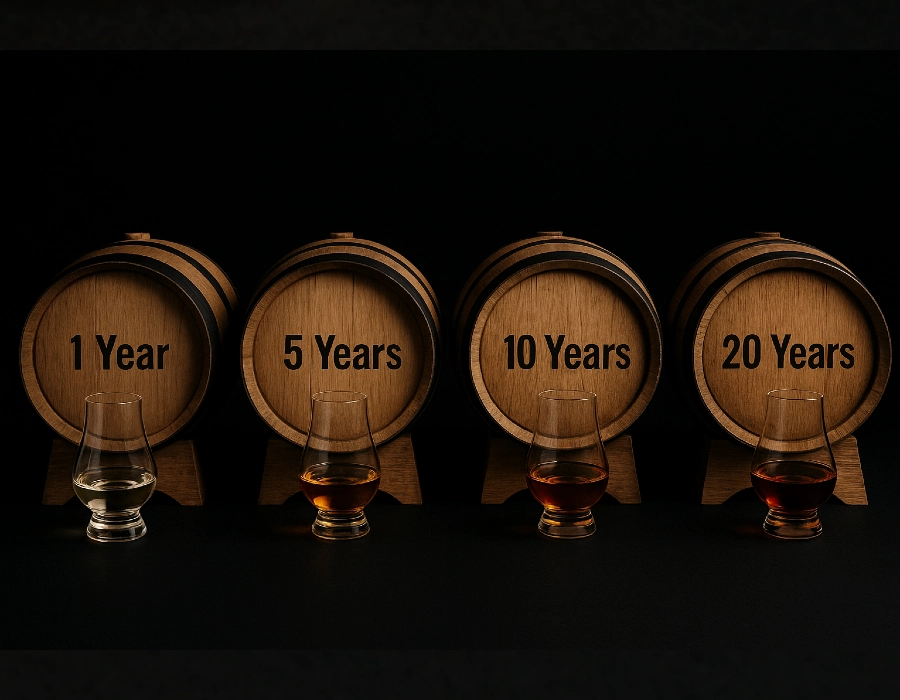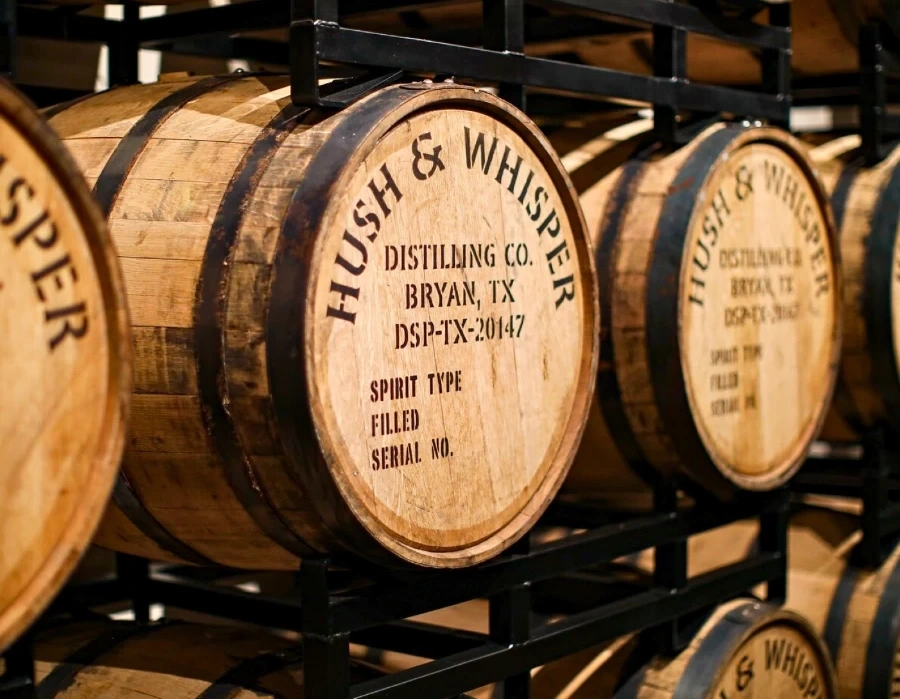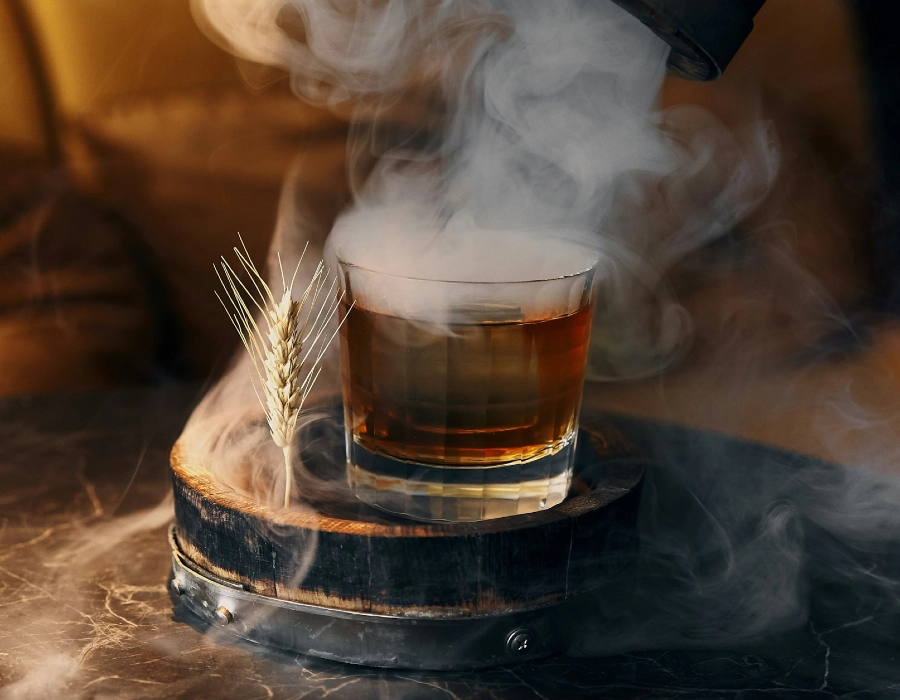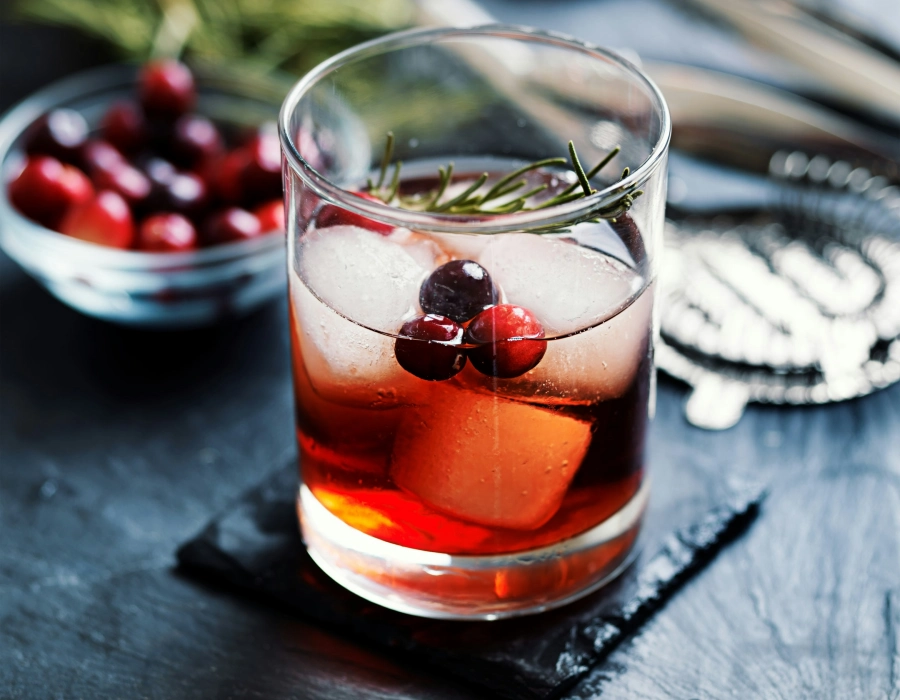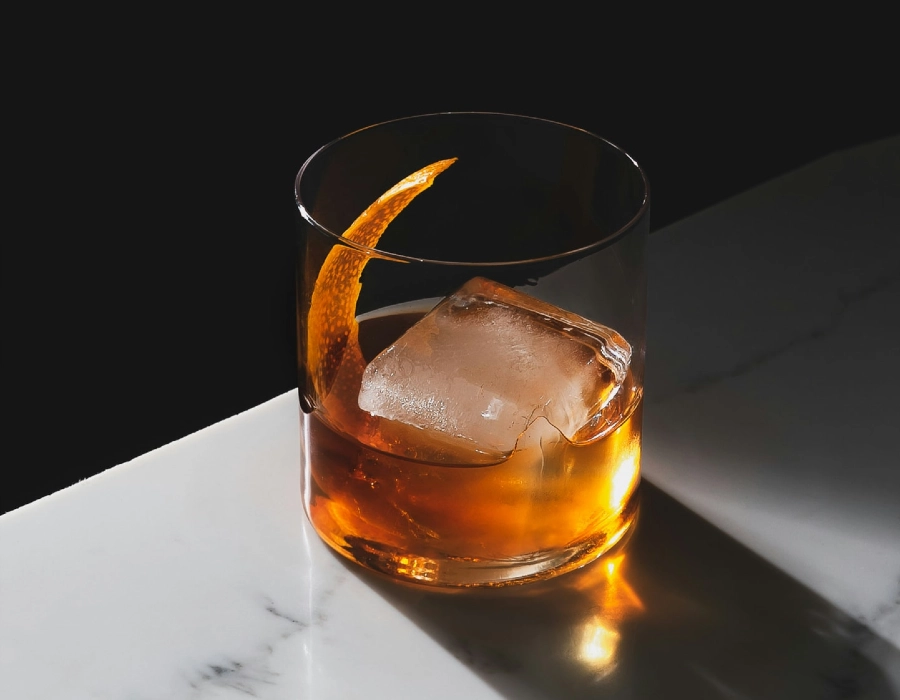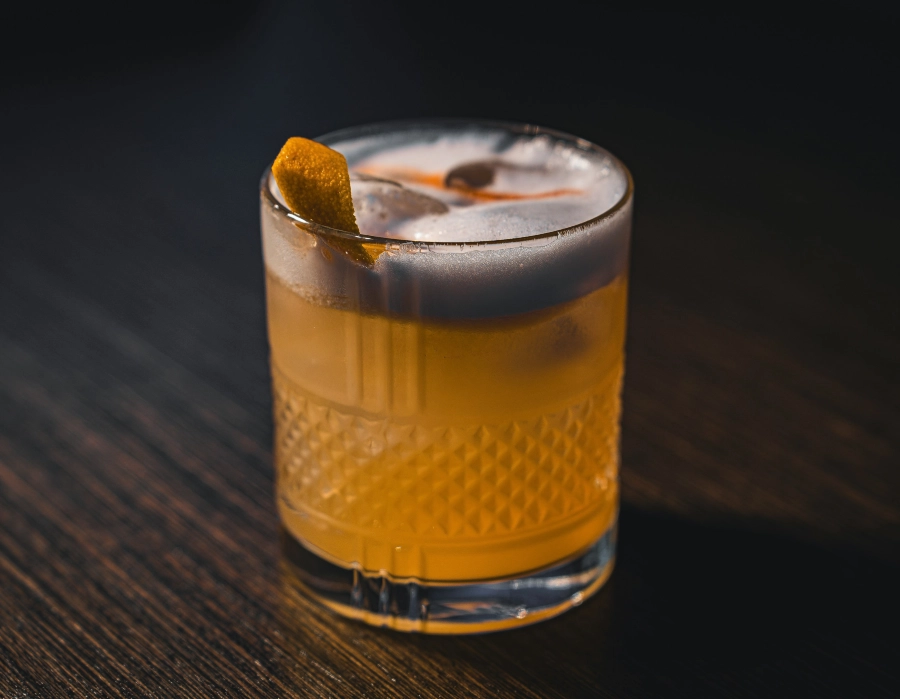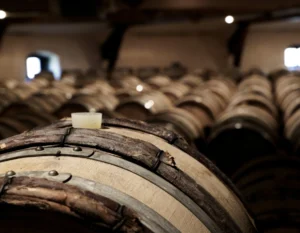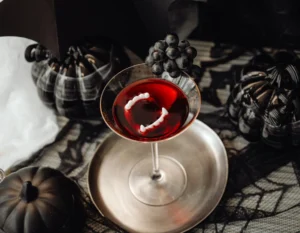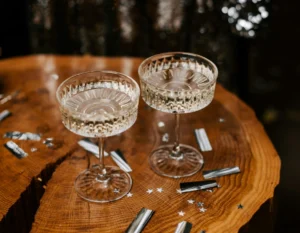There’s a kind of madness in locking raw spirit away in wooden barrels and trusting time to make it beautiful. The clear liquid that drips from the still isn’t whiskey yet. It’s just fermented grain and heat. Only after years sealed inside oak barrels does it transform into something layered, rich, and worth savoring. Industry experts estimate that up to 80% of a whiskey’s final flavor comes from the aging process itself. The wood, the air, and the slow passing of seasons turn raw alcohol into something extraordinary. Every bottle’s story begins with fire, patience, and a cask that never stops breathing.
At Hush and Whisper Distilling Co., that transformation is where the art and science of whiskey truly come alive.
The Science Behind Barrel Aging: How Wood Transforms Whiskey
Whiskey is a living spirit. Once it meets oak, chemistry takes over. Alcohol reacts with charred wood, sugars caramelize, tannins dissolve, and oxygen sneaks through the grain to stir up complexity. What begins as clear, harsh spirit becomes darker, smoother, and infinitely more sophisticated.
Three Chemical Forces Shape Every Drop
Extraction pulls compounds from oak into the aging whiskey. Vanillin creates vanilla notes, lignin breaks down into smoke and spice, tannins add structure, and lactones contribute coconut flavors especially prominent in American white oak.
Oxidation mellows the spirit as air seeps through barrel staves. Oxygen softens harsh edges and creates new aromatic compounds, transforming raw alcohol into something complex and refined.
Evaporation concentrates the remaining liquid as 2 to 5 percent disappears annually. The spirit grows richer and more intense, with proof rising in dry climates or falling in humid ones.
Together, these forces sculpt premium whiskey’s complex character.
Essential Flavor Compounds From Oak Barrels
Inside those wooden barrels live the molecular ingredients of temptation:
- Vanillin: Sweet vanilla that appears prominently in bourbon aged in new charred oak barrels
- Lignin derivatives: Break down into smoky flavors, clove, and eugenol spice
- Oak lactones: Contribute coconut and woody character, strongest in American oak
- Tannins: Provide structure, a slight drying sensation on the palate, and enhance complexity
- Hemicellulose sugars: Caramelize during barrel charring to create caramel, toffee, and butterscotch notes
The interaction between these compounds and the alcohol creates the flavor profile that elevates whiskey from a simple distilled spirit into an art form.
How Different Types of Oak Shape Flavor
Not all oak barrels tell the same story. Distilleries choose their casks like artists choose paint, each type of wood brings its own personality to aging spirits.
American White Oak: The Bourbon Standard
American oak (Quercus alba) is the backbone of bourbon and most American whiskey production. By law, bourbon must age in new charred oak barrels made from American white oak, which gives this spirit its distinctive sweetness and warmth.
The tight grain of American white oak holds liquid securely while still allowing controlled oxidation. These barrels impart caramel, vanilla, and faint coconut character. The natural sweetness of the wood plays beautifully with corn-heavy mash bills, creating that smooth, round bourbon heat that clings to the palate.
When you sip bourbon and taste honey, butterscotch, and baking spice, you’re tasting American oak at work.
European Oak: Complex Spice and Dried Fruit
European oak (primarily Quercus robur and Quercus sessilis) offers a darker, more tannic character. It’s known for stronger astringency and wine-like depth that creates rich flavors in scotch whisky and some premium American whiskeys.
European oak barrels (especially those previously used for sherry, port, or wine) give off fruity undertones and complex flavors that evoke dried figs, raisins, dark chocolate, and Christmas spice. Scotch whisky aged in European oak often carries layers of oxidized fruit, leather, tobacco, and ancient cellar dust.
The wider grain allows more interaction with air, accelerating certain aspects of the aging process while adding bold tannins that require patience to integrate properly.
Used vs New Barrels: The Flavor Intensity Debate
A new barrel delivers powerful extraction and intense wood character. A used barrel, called a refill cask, offers restraint and subtlety.
American bourbon law requires new charred oak barrels, but once emptied, those barrels often travel to Scotland or Ireland. There, they’re refilled for scotch whisky or Irish whiskey, allowing delicate grain flavors to develop without overwhelming wood influence. The result is smoother spirit layered with gentle sweetness, subtle oak, and a longer, cleaner finish.
Some distilleries use a combination, initial aging in used barrels followed by finishing in fresh casks to add a final burst of wood character just before the final product is bottled.
The Critical Role of Barrel Charring in Flavor Development
Fire changes everything. Before a barrel ever meets whiskey, the inside is toasted or burned. The level of barrel charring determines how deeply that transformation penetrates the wood and shapes the whiskey aging process.
Understanding Char Levels
Coopers typically offer four standard char levels, numbered 1 through 4:
- Char #1 (Light): About 15 seconds of flame. Brings out vanilla and floral tones while maintaining delicate wood sugars
- Char #2 (Medium): About 30 seconds. Balanced sweetness with emerging caramel and spice
- Char #3 (Medium-Heavy): About 45 seconds. The most common choice for bourbon, offering strong caramel and vanilla with noticeable smoky flavors
- Char #4 (Heavy or Alligator): About 55 seconds or more. Named for its cracked, alligator-skin appearance. Pulls sugar deep into carbon layers and transforms it into smoke, dark caramel, and espresso-like bitterness
Why Barrel Charring Matters for Extracting Flavors
Charred oak barrels act like natural filters. As the spirit expands into the wood with temperature fluctuations and then contracts back out, impurities cling to the activated carbon layer created by fire. What returns to the liquid center is clearer, smoother, and more complex.
The charring process also caramelizes wood sugars trapped in the oak, creating rich flavors that would not exist in uncharred barrels. Heavy char produces more smoky flavors and darker color, while lighter chars preserve delicate fruit and floral notes from the original grain.
Barrel charring does not just color the whiskey, it gives it soul.
How Aging Time Affects Whiskey Flavor Development
Time inside oak is not passive waiting. It is active transformation. The whiskey aging process works in phases, each contributing different characteristics to the final product.
Years One Through Four: Foundation Building
Early in life, aging whiskey tastes of raw grain and heat. The young spirit still clings to its barley, rye, or corn roots, with aggressive alcohol burn on the palate.
During these first years, extraction dominates. The oak begins surrendering its compounds aggressively, replacing harsh grain alcohol with honey, vanilla, and spice. Color develops rapidly as the spirit pulls tannins from the wood. The whiskey is drinkable but still rough around the edges. Bold rather than balanced.
Years Five Through Ten: The Golden Window
This is where aging whiskey often reaches its peak. Oxidation has had time to knit disparate flavors together. Tannins soften from astringent to pleasantly dry. Sweetness builds and integrates with spice, creating layers that unfold across the palate.
Master distillers taste constantly during this window, chasing that precise moment when balance meets boldness. For many bottles of bourbon, scotch, and rye, this becomes the sweet spot, aged enough to develop complexity but young enough to retain energy and fruit.
Most premium whiskeys are bottled between six and twelve years for good reason. This is when the conversation between wood and alcohol reaches its most eloquent point.
Beyond Ten Years: The Edge of Over-Aging
Leave whiskey too long in wooden barrels and the oak turns from mentor to tyrant. Excessive aging can draw out bitter tannins that mute the fruit and sweetness that once shone. The spirit becomes woody, astringent, and unbalanced.
However, in cool climates like Scotland, fifteen to twenty-five year aging can work beautifully because the slower pace of extraction and oxidation prevents over-oaking. In hot warehouses in Kentucky or Texas, that same timeframe might produce something undrinkable.
The surrounding environment determines how long is too long. The trick is knowing when the barrel has said enough.
How Environment and Chemistry Shape Whiskey
Whiskey doesn’t age in a vacuum. Three chemical forces (extraction, oxidation, and evaporation) work together with environmental conditions to create the complex flavors that define premium spirits.
Extraction and Temperature: The Breathing Barrel
As whiskey rests in wooden barrels, alcohol acts as a solvent, pulling compounds from the oak. Vanillin creates vanilla notes, lignin breaks down into smoke and spice, tannins add structure, and lactones contribute coconut flavors.
Temperature fluctuations drive this process. Heat expands liquid deep into charred oak, extracting flavors aggressively. Cold draws it back out, pulling dissolved compounds into the barrel’s center. Each seasonal cycle increases interaction between spirit and wood.
Hot climates like Texas and Kentucky create bold, fast-aged whiskey with rich flavors in just five years. Cool Scottish warehouses produce the same depth more slowly, often requiring eight to ten years.
Oxidation: The Slow Sculptor
Tiny amounts of air seep through barrel staves, allowing oxygen to mellow harsh grain alcohol and create new aromatic compounds. This slow process softens sharp edges and builds complexity. Without oxidation, even aged whiskey would taste one-dimensional and raw.
Evaporation and Humidity: Concentration and Loss
Each year, 2 to 5 percent of the spirit disappears through the barrel (the angel’s share). But humidity determines what evaporates.
In dry climates, water escapes preferentially, concentrating alcohol and creating fiery, high-proof whiskey. In humid conditions common to Scotland and Ireland, alcohol evaporates faster than water, naturally lowering proof and softening the palate.
What remains becomes richer and more intense, with flavor concentrated by time and loss.
Warehouse Position: Vertical Flavor Gradients
Not all barrels age identically. Upper racks experience more heat, aging faster and developing concentrated spice and aggressive oak in four to six years. Floor-level barrels stay cooler, producing mellower whiskey with subtle complexity that takes eight to ten years to develop.
Master distillers blend barrels from different positions, balancing sharp character with smooth refinement. Each warehouse becomes its own ecosystem, with hundreds of microclimates creating unique variations.
Together, chemistry and environment act as both sculptors and thieves, carving the distinctive character of every whiskey.
White Whiskey: Where Every Aged Whiskey Begins
Before whiskey turns amber and develops complex flavors, it begins as something raw, vibrant, and unfiltered: White Whiskey. Often called white dog, moonshine, or new make spirit, this unaged whiskey is the purest expression of grain, fermentation, and distillation.
What Makes White Whiskey Different
White whiskey skips the wooden barrels entirely. After distillation, it goes straight into the bottle at high alcohol content (usually 80 to 125 proof), offering an unvarnished taste of the distillery’s grain bill and technique.
Our Hush & Whisper Whiskey showcases a carefully crafted grain recipe:
- 70% Corn: Provides natural sweetness and smooth warmth on the palate
- 16% Wheat: Adds creamy, rounded texture that softens the spirit
- 14% Malted Barley: Contributes nutty complexity and enzymatic character
Without oak to hide behind, every sip reveals the essence of these grains exactly as our distillers intended. It is the acoustic version of whiskey. Stripped down, raw, and honest.
How to Enjoy White Whiskey
White whiskey is surprisingly versatile despite its bold grain-forward character:
- Neat: Experience full grain intensity and alcohol heat.
- On ice: Water from melting ice opens up sweetness and tames the fire.
- In cocktails: Use as a base for creative drinks that highlight its natural sweetness and spice
This is the exact spirit that later rests in our barrels to become our aged whiskey, making it the first chapter in a larger story about how barrel aging shapes flavor. Greatness does not always need time. Sometimes it starts right here.
Rye Whiskey: Bold Complexity from Patient Aging
Rye whiskey has surged in popularity thanks to its distinctive spice and complexity. When rye-heavy grain bills meet charred oak barrels for extended aging, the result is a spirit that demands attention.
What Defines Rye Whiskey’s Character
By law, rye whiskey must contain at least 51 percent rye grain in its mash bill. That rye brings assertive peppery spice, herbal notes, and a drier profile compared to sweeter corn-based bourbon.
During the aging process, rye’s natural spiciness interacts beautifully with oak barrels. The wood’s vanilla and caramel notes do not overwhelm rye’s bold personality. They complement it, creating a push-pull between sweet and spicy that keeps the palate engaged.
Hush & Whisper Straight Rye Whiskey
Our Straight Rye Whiskey captures everything compelling about this style. Each pour opens with aromas of baking spice, cinnamon, and toasted oak. On the palate, it is full-bodied and confident, pepper and clove meet smooth caramel and vanilla from careful barrel aging in American white oak.
The finish lingers warm, leaving flavors of spice and sweetness intertwined, with subtle hints of dried fruit and dark chocolate emerging as it opens in the glass.
Enjoy it neat to experience its full intensity, add a splash of water to reveal hidden complexity, or build classic cocktails that can stand up to rye’s bold character. Whether you’re pairing it with dark chocolate, aged cheese, or slow-smoked brisket, this whiskey rewards attention and patience. Just like the barrels it came from.
Barrel Size, Finishing, and Advanced Techniques
Beyond basic aging, distilleries employ sophisticated techniques to enhance sweetness, add unique flavors, and create distinctive character in their spirits.
How Barrel Size Affects Aging Speed
Size controls how fast flavors develop. The more surface area per volume, the more often the spirit meets wood, accelerating extraction and change. It is the quiet lever that sets the pace for flavor, structure, and timing.
Small Barrels (5 to 30 gallons)
- Fast extraction and bold oak presence
- Deep caramelization and color in 6 to 12 months
- High risk of over-oaking if left too long
Best when you want speed and intensity, with close monitoring to protect balance in the aging process.
Standard Barrels (53 gallons)
- Industry benchmark for a reason
- Gradual extraction and steady oxidation over the years
- Lower risk of harsh tannins, better long-term balance
Choose this when you want classic development, nuance, and a wider blending window.
Large Casks (100 gallons and up: puncheons, butts, pipes)
- Slower interaction with wood per gallon
- Gentle seasoning and subtle oak character over an extended time
- Often used for finishing or delicate spirits
Pick large formats for finesse, softer edges, and a lighter oak footprint.
Quick Selector
- Want speed and punch? Small barrels.
- Want balance and versatility? Standard 53-gallon.
- Want subtlety and grace? Large casks.
Match the vessel to the outcome you want.
Finishing Techniques: The Art of the Second Barrel
Once whiskey matures in its primary barrel, distilleries sometimes transfer it to a different cask for additional aging, a process called finishing or cask finishing.
- Port casks add berry sweetness, ruby color, and hints of dried fruit. A bourbon finished in ruby port might taste of cherry, plum, and chocolate.
- Sherry casks contribute oxidized fruit character, nutty complexity, and rich body. Both European oak sherry barrels and American oak versions are prized in scotch whisky production.
- Wine barrels from Cabernet, Sauternes, or other varieties introduce subtle grape tannins, acidity, and fruit aromatics that layer beautifully with existing whiskey character.
- Rum, Cognac, and other spirit barrels bring their own signatures, tropical fruit from rum casks, grape sweetness from Cognac, or even tequila’s agave notes.
Each finishing cask adds another verse to the same song, making aged whiskey richer, more complex, and more daring. The technique allows distillers to create limited editions and special releases that push boundaries while honoring traditional aging spirits.
Classic Cocktails That Showcase Aged Whiskey
Great aged whiskey does not fear being mixed. It just demands recipes that respect its complexity and allow barrel character to shine.
Old Fashioned
Ingredients:
- 2 oz aged whiskey (bourbon or rye)
- 1 sugar cube or ½ oz simple syrup
- 2 to 3 dashes Angostura bitters
- Orange peel
- Ice
The Old Fashioned is whiskey’s purest cocktail form. Our Straight Rye Whiskey’s natural spice pairs perfectly with sugar and bitters, letting caramel and vanilla from barrel aging roll through each sip. The drink amplifies rather than masks the complexity earned during years in charred oak barrels.
Manhattan
Ingredients:
- 2 oz rye whiskey or bourbon
- 1 oz sweet vermouth
- 2 dashes Angostura bitters
- Luxardo cherry
Rye’s boldness turns this classic into silk. The interplay between whiskey’s barrel-aged spice and vermouth’s red-fruit sweetness creates layers of complexity. Each taste reveals different notes, first vanilla and oak, then baking spice and cherry, finishing with warming alcohol and gentle tannins.
Boulevardier
Ingredients:
- 1 oz whiskey (bourbon or rye)
- 1 oz Campari
- 1 oz sweet vermouth
- Orange peel
This equal-parts drink is a bitter, smoky, complex sipper that glows amber in the glass. The aged whiskey’s caramel sweetness balances Campari’s bitterness while oak tannins add structure. It is sophisticated, challenging, and rewards slow sipping.
Whiskey Sour
Ingredients:
- 2 oz bourbon or rye
- ¾ oz fresh lemon juice
- ½ oz simple syrup
- Optional, egg white for foam
- Angostura bitters for garnish
The bright acidity of lemon juice lifts aged whiskey’s sweet and oaky notes, creating balance between tart and rich. The citrus cuts through barrel-contributed vanilla and caramel, making this refreshing rather than heavy. Use quality aged whiskey here. The cocktail showcases rather than hides the spirit’s character.
Common Barrel Aging Myths Debunked
Whiskey attracts folklore and superstition. Here are widespread myths worth putting to rest:
Myth: Older Always Means Better
Truth: Age is just one factor. A 25-year whiskey can taste woody, bitter, and unbalanced if over-aged, while an 8-year bottle might be perfectly harmonious. The surrounding environment, barrel quality, and distiller’s skill matter more than years alone. Some of the world’s finest whiskeys are 6 to 10 years old.
Myth: All Oak Barrels Taste the Same
Truth: American white oak brings sweetness, vanilla, and coconut. European oak leans toward spicy, tannic, and fruity character. The wood species, cooperage techniques, barrel charring level, and previous contents all dramatically impact flavor profile. The barrel choice is one of the most critical factors in shaping final character.
Myth: Charring Level Doesn’t Matter
Truth: Fire is flavor. Light barrel charring whispers vanilla and preserves delicate fruit notes. Heavy char roars with smoke, espresso, and dark caramel. The char level determines which compounds become available for extraction and how filtering through carbon affects the final product. It is the difference between elegant and aggressive.
Myth: You Can Age Any Whiskey Forever
Truth: Every barrel hits a wall. At some point, determined by climate, barrel size, and wood quality, the oak stops giving and starts taking. Over-aged whiskey becomes woody and tannic and loses the bright grain character that makes it interesting. The art is knowing when to stop.
Myth: Climate and Location Don’t Matter
Truth: The surrounding environment is a silent ingredient in every bottle. Hot warehouses speed flavor development through aggressive temperature fluctuations. Cool cellars slow the aging process, building subtle complexity. Humidity levels determine whether alcohol content rises or falls. Two identical barrels aged in Kentucky versus Scotland will taste completely different after the same time period.
Myth: The Angel’s Share Is Just Marketing
Truth: Evaporation is real, significant, and costly. Distilleries genuinely lose 2 to 10 percent of their spirit annually depending on climate. That loss concentrates flavors, raises or lowers proof, and represents millions in inventory that simply vanishes into air. It is romantic terminology for an expensive reality.
Whiskey does not care what you believe. It listens only to chemistry, time, and heat.
A Toast to Time and Fire
Patience is risky, and barrel aging proves it. Fermented grain meets flame, slips into virgin oak, and spends years breathing in silence. Heat swells it into wood, cold draws it back. The angel’s share vanishes. Oxygen softens. Tannins frame. Vanillin sweetens. Raw spirit becomes whiskey.
Pour Hush & Whisper White Whiskey to taste the first chapter, or our Straight Rye Whiskey to feel the full arc. You are tasting weather, wood, and willpower. American white oak leaves its mark, European finishes add a quiet accent, and the ghost of evaporation lingers in every sip.
Flavor is born from critical factors that steer the aging process, from barrel charring and time to temperature and humidity. Those forces shape unique flavors across different types of casks and climates.
Raise your glass to the slowest art on earth. Let the years speak.
Visit Hush & Whisper Distilling Co. in Bryan, Texas. Tour the warehouse, taste what oak and time can do, explore our lineup from White Whiskey to aged Rye, and find your favorite chapter. Contact us and book your distillery tour today.

